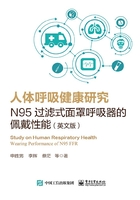
1.1 Background
With the rapid economic growth over the past several decades,China has become the world's second largest economy in terms of gross domestic product (GDP) and the world's largest consumer of energy in the world.The extensive industrial development,substantial coal-dependent energy consumption,and increasing number of vehicles in China have led to a rise in emissions of air pollutants and carbon dioxide.It is reported that the country now produces the largest number of major pollutants in the world,which cause serious air pollution.In September 2010,national aeronautics and space administration (NASA) released a global satellite-derived map and reported the average particulate matter with an aerodynamic diameter of less than 2.5μm (PM2.5) results from 2001 to 2006.That map shows very high levels of PM2.5 in Eastern Asia,especially in most part of China.
Air pollution causes adverse health effects.Air pollutants contain a large number of harmful chemical substances and suspended particular matter (PM).PM is a widespread air pollutant,consisting of a mixture of solid and liquid particles suspended in the air,and it is regarded as the most serious pollutant around the world.Fine PM (PM2.5:aerodynamic diameter of particle ≤2.5μm) poses greater health risks than the coarse PM (PM10:aerodynamic diameter of particle ≤10μm) because the increased surface areas of PM2.5 can adsorb other toxic air pollutants (oxidant gases,organic compounds and transition metals) more easily.
The Global Burden of Disease Study 2010 found that PM2.5 ranks fourth among the greatest health threats to Chinese people.Constant exposure to air polluted by PM2.5 can cause severe harm to the human respiratory system and cardiovascular system.Some studies have shown a clear association between PM2.5 pollution and diseases of the respiratory system and cardiovascular system.Moreover,PM2.5 concentration and chemical composition have shown a direct relation to lung cancer.The World Health Organization (WHO) reported that the risk of death rised when PM2.5 concentration constantly remained above 10μg/m3.Studies by the World Bank,WHO and the Chinese Academy for Environmental Planning on the effect of air pollution on health revealed that 350,000 to 500,000 people die prematurely each year as a result of outdoor air pollution in China.
Respiratory system is an important pathway for foreign matter to enter the human body.Air enters the trachea through the nasal and oral cavities,passes through the tracheobronchial tree and reaches the alveoli;airborne nanoparticles are also carried via the inspired air.Numerous studies have shown that the transport and deposition of particles have great effects on human health.However,a complete theory of particle transport and deposition has not yet been established.Further,most of the investigations lack a systematic study on the main factors of particle deposition.
How can people protect themselves from air pollutants in daily life?The most common way to prevent the inhalation of air pollutants,especially PM2.5,is to wear a filtering facepiece respirator (FFR).N95 FFR designed for the industrial/surgical purpose are widely used by citizens in their daily life.However,citizens who use an N95 FFR may suffer discomfort.The physiological effects of wearing an N95 respirator include headache,dizzy,nausea,heat,increasing heart rate,itching,etc.Moreover,different sizes of human head and head movement may compromise the respirator fit,causing air leakage.Therefore,it is imperative to develop effective preventive methods to reduce health risks caused by air pollution.